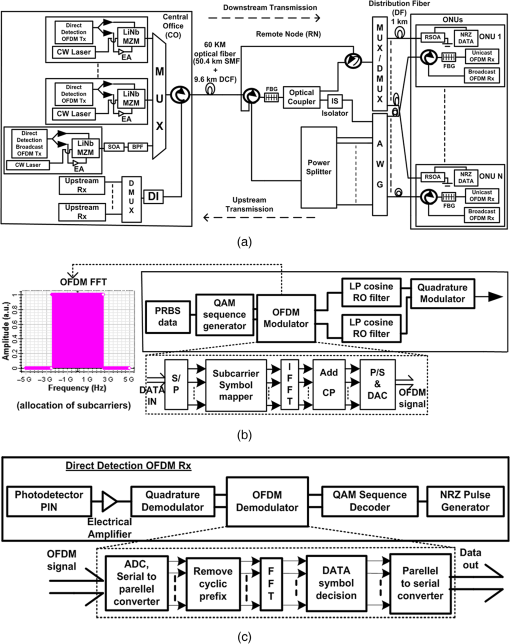

For C/L-band devices at a drive current of 50mA, more than 20dB of gain can be observed from 1535nm upwards, with Psat rising to a maximum of 6dB at 1580nm.

Small signal PDG is less than 2.8dB across the band and ripple is less than 2.2dB both will reduce substantially in operation as the gain is compressed.

The NF peaks atġ0.5dB at 1465nm but is generally <10dB. S-band devices (Figure 1) exhibit excellentgain (over 20dB from 1470 nm upwards), with Psat rising to a maximum of 7.5dB at 1530nm. A parametric performance summary of the key operational parameters of a pigtailed TO style packaged RSOA device at a drive current of 80mA is shown in Figure 1 and Figure 2. The key parameters of interest for an optical amplifier are gain, Noise Figure (NF), polarization dependent gain (PDG) and maximum saturable output power (Psat) with RSOAs, modulation bandwidth is also relevant. To further reduce the effective facet reflectivity and improve coupling, the device output far field is reduced through the linear tapering of the active region is in the lateral direction from 1.2µm to approximately 0.45µm over 80µm approaching the angled facet. The input facet is angled and to achieve a normal and a 10 degree angled facet on the same device the gain region is curved close to the centre of the chip with a bend with radius of 3mm. The RSOAs have a high reflectivity coating on one facet and an ultra low reflectivity coating (<10-5) on the other. After passing through a variable optical width Band-Pass Filter (BPF), the upstream modulated signal was received at the OLT using combination of an Avalanche Photodiode (New Focus 1647 APD Photo-receiver) followed by a limiting amplifier. optical amplifier (WB-TW-SOA), Reflective semiconductor optical amplifier (RSOA). Control over the RSOA chip temperature is also provided by an external controller the RSOA performance was characterised at a chip An ETS3869 driver, which provides control over the bias current (Ibias) and the data modulation, was used to modulate the RSOA. The seed wavelength was injected into an RSOA, directly modulated at 1.25Gbits/s with a NRZ Pseudo Random Bit Sequence (PRBS) 211-1. The remainder of the transmission (backhaul and splitter) can be considered as a lumped loss and can be most readily emulated by two Variable Optical Attenuators (VOAs) at low data rates (1.25Gbit/s) dispersion is not The CW source can either be a laser or a broadband light source filtered by an optical multiplexer/de-multiplexer. At each of the ONUs, an RSOA is used to amplify the seed signal and directly modulate it with data to be carried in the upstream direction. "This new edition of OptiSystem delivers an unprecedented array of simulation design features, and with the introduction of new component models addressing OCDMA-PON design, bolstered by the 64-bit edition, we see this release as our best work yet.Also i want to add that Wavelength seeded RSOA PONs share a CW seed source between many users. Jackson Klein, director of optical systems at Optiwave. "Researchers in the field of optical communication and amplifier design see OptiSystem's capabilities as a valuable tool to help meet their complex research demands," said Dr. OptiSystem 7.0 includes a variety of new component models, including reflective semiconductor optical amplifiers (RSOA) for WDM-PON architectures.
RSOA IN OPTISYSTEM UPGRADE
The upgrade enables users to run large-scale "real world" simulations more easily.
RSOA IN OPTISYSTEM CODE
The optimized code structure results in improved computing performance and efficient memory utilization, the company says. 2276 JOURNAL OF LIGHTWAVE TECHNOLOGY, VOL. In addition to new functionality, OptiSystem is now available in a newly designed 64-bit edition, addressing complex computing simulations requiring a significant amount of memory. This includes optical code-division multiple access for passive optical networks (OCDMA-PON). in 6 proposed and demonstrated the symmetric wavelength division multiplexing PON (WDM-) with 55 Gbps downstream and upstream OOK modulation with channel spacing of 100 GHz and 50 GHz at 30 km distance. The release delivers several new features designed to facilitate the simulation and design of emerging optical network technologies. (RSOA) at user end for 20 km fiber distance. (search for Optiwave) has announced the immediate availability of OptiSystem 7.0, the latest version of its optical communication system design suite.


 0 kommentar(er)
0 kommentar(er)
